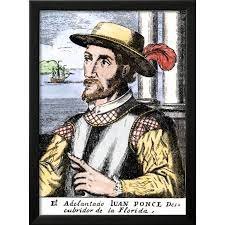Unraveling the Island's Fascinating Origins
Marco Island, a serene paradise along Florida's Gulf coast, has a history as rich and captivating as its sandy shores and sparkling waters. The story of its name begins with Spanish explorers who arrived in the mid-1500s, leaving a mark that echoes through the ages.
La Isla de San Marcos: A Tribute to St. Mark
Legend has it that in the 16th century, Juan Ponce de Leon, a renowned Spanish explorer, made landfall on the southern end of the island. Subsequently, when other Spanish explorers arrived in the mid-1500s, they bestowed the name "La Isla de San Marcos" upon the island, paying tribute to the Gospel writer St. Mark.
The history of Marco Island stretches back even further to 500 AD when the Calusa people inhabited the area, including much of Southwest Florida. The Calusa were skilled artists, crafting intricate clay masks and a remarkable wooden statue known as the Key Marco Cat, which remains one of the finest pieces of Pre-Columbian Native American art discovered in North America.
Pioneers and Discoveries: Unraveling the Past
Fast forward to the late 1800s, and Marco Island saw the arrival of pioneers like William Thomas Collier, who founded the Village of Marco in 1870. His son, William D. "Capt. Bill" Collier, further developed the island by opening the Olde Marco Inn, which still stands today as one of Southwest Florida's oldest buildings.
The Olde Marco Inn sits on former Calusa Indian grounds, near the spot where the Key Marco Cat and other significant artifacts were discovered. The island's historical society showcases some of these precious findings, offering visitors a glimpse into the island's ancient past.
The 1960s: A Turning Point for Tourism
The 1960s marked a significant turning point for Marco Island's tourism industry. The Deltona Corporation, led by the Mackle brothers, played a pivotal role in the island's development. They purchased vast amounts of land for $7 million and embarked on transforming Marco Island into the sought-after tourist destination it is today.
In 1969, the S.S. Jolley Bridge opened, providing easier access to the island from nearby Naples. This bridge opened the doors for millions of visitors who now flock to the island annually to experience its natural beauty and tranquil ambiance.
From Village to City: A Modern-Day Paradise
Marco Island continued to evolve, and in 1997, it was reincorporated as a city, marking another milestone in its remarkable history. Today, Marco Island welcomes visitors and residents alike to revel in its picturesque landscapes, beautiful beaches, and an abundance of opportunities for outdoor recreation.
The island's allure lies not only in its natural splendor but also in its unique heritage, shaped by the Calusa people, Spanish explorers, and pioneering visionaries. As you stroll along Marco Island's shores, remember that you are walking through the pages of history, where ancient tales and modern-day dreams converge to create a true tropical paradise.
Patrick Wilkins is a Broker at RE/MAX Affinity Plus on Marco Island, with over 40+ years of experience representing buyers and sellers of residential, commercial and investment real estate in Marco Island and Naples, FL | 239-290-8593 | patwilkins@marcoexpert.com


















